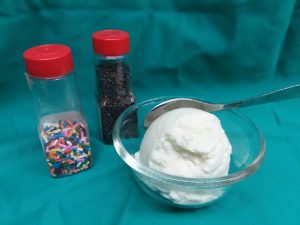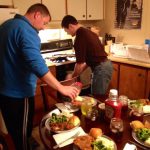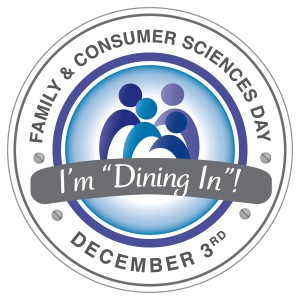
by Angela Hinkle | Jul 18, 2019
Cold and refreshing on a hot summer day. Official by presidential proclamation. It practically saved my life once. Behold – The Power of Ice Cream.
HISTORY
Some say the Chinese invented ice cream in the first century. Roman emperors are also credited with flavoring ice gathered from mountain tops. Still others say ice cream found its start in the areas of Iran or Ancient Greece. Regardless of its origins, ice cream was often only available to royalty who could afford the resources to make it. Once refrigeration/freezing became affordable, the popularity and availability of ice cream rose considerably. So now, most of us – royalty or not – can enjoy the Power of Ice Cream all year long.
THE 411
- Ice Cream is made with greater than 10% milkfat.
- Gelato is generally made up of 7%-8% fat.
- Soft serve has more air mixed in.
- Frozen Yogurt is usually lower in fat and is often available soft-serve style.
- Sherbet freezes a combination of fruit juice with milk, cream, egg white, or gelatin.
THE 911
Picture it. Moving day. One of the hottest, most humid days of the year. The kind of day that you feel like you’re walking around in really warm soup. Though I’m staying hydrated, after about four hours in, it hits me. I go into a fog and literally start to go down to the ground. Luckily, my dad is pretty quick on his feet for a big Sicilian man. He puts me in the shade and says, “Don’t move!’ To this day, I don’t know how he did it so fast, but within two minutes, he got me the best cold ice cream dessert ever. The world was quickly righted as was I. Though this is NOT normal emergency protocol, it’s my miracle ice cream story and I’m sticking to it.
COOL TIDBITS

A cool and refreshing sweet treat
Photo Source: Angela Hinkle
- The United States leads the way in ice cream consumption, eating or licking or drinking about 48 pints or 23 pounds a year.
- President Ronald Reagan declared July National Ice Cream Month. The third Sunday in July, this year July 21st, is National Ice Cream Day.
- Though boasting 31 flavors, Baskin Robbins’ most popular flavor is vanilla.
- Because acquiring vanilla was so difficult before the mid-1800s, vanilla ice cream was considered quite an exotic treat.
- Sometimes, because nerve endings on the roof of your mouth suddenly get cold from eating ice cream, your brain tells the blood vessels, “Contract!” When they go back to their normal size, blood rushes back in. And ooh, “ice cream headache.” One recommendation to prevent this “brain freeze” is to eat slowly. And a recommendation to stop it is to put your tongue up to the roof of your mouth. Nothing guaranteed – so good luck.
- 15%-20% of Americans say they eat ice cream in bed. For more interesting ice cream trivia, visit foodreference.com
BENEFITS
Though not a particularly nutrient dense food, ice cream does have some health benefits. The area of your brain called the orbitofrontal cortex – or pleasure center – is activated when people are happy. Eating ice cream has been identified with having an immediate “happy” effect on the brain. There is also calcium in ice cream, which is good for building strong bones and teeth. Question – should all your daily calcium come from ice cream? Answer – Um, No. Try to choose more calcium-rich foods that are lower in fat and sugar.
So, in moderation of course, enjoy the Power of Ice Cream!

Cold, Delicious, and so many flavors! Photo source: Lyndsey B.
See Below for two healthier ice cream options. Yum!
MyPlate Sundae
This recipe includes all five food groups.
Layer in a clear glass bowl, mug, or cup so you can see all the colorful layers.
- Dairy – Gelato or frozen yogurt – your choice of flavor
- Vegetable – Frozen sweetened rhubarb or cooked, mashed, and cooled sweet potato
- Fruit – Most any berry works great
- Grain – granola
- Protein – Sprinkle on your favorite nuts
Cool and Creamy Calcium Dreamy
Serves 3
Items needed
1 – gallon heavy-duty ziptop bag
1 – quart heavy-duty ziptop bag
rock salt
ice
Procedure – In the 1 quart bag add the following:
¼ cup pasteurized liquid eggs
1 cup fat-free milk
1 cup fat-free half and half
½ cup sugar
1 teaspoon vanilla flavoring
Zip the top closed. Put the 1-quart bag inside the gallon bag. Pack the gallon bag with ice and ¾ cup of rock salt. Close the top. Work the bag back and forth – rolling over and over or tossing back and forth for 15 minutes. It may help to have potholders or a dish towel to hold the bag, as it will get very cold. Drain the water off and stir your cool and creamy calcium dreamy. Repack the gallon bag with ice and rock salt and roll or toss for five more minutes.
Serve immediately with fresh local fruits and nuts. Enjoy!
For more about the dairy food group see https://www.choosemyplate.gov/dairy

by Angela Hinkle | May 6, 2019
Spring has sprung! Have you? One way to shake off those groggy winter hibernation feelings is to Put a Little Step In Your Spring.
Regular Brisk Walking
- Means you can talk but maybe not sing. You may be slightly out of breath.
- Improves overall health.
- Can help you maintain a healthy weight.
- Prevents chronic health conditions including heart disease, high blood pressure, and type 2 diabetes.
- Strengthens bones.
- “Boosts” or increases muscle power and endurance.

Ready to walk to the top (of Mt Vesuvius) Photo Source: Richard Waid
Strive for 10,000 Steps a Day
- Spring clean your house.
- Mow the lawn.
- Dance around your living room.
- Take the stairs.
- Park in the farthest spot in the parking lot from your destination.
- Wear a pedometer or electronic fitness device to measure how many steps you’ve gone.
- Try for at least 30 minutes a day. If you can’t – break up your walking into smaller segments.
- Vary your intensity – speed up, slow down. Then repeat.
- Vary the view. Try different settings to walk – your neighborhood, the beach, or the woods.
Make It Social
- Let your dog take you for a walk. (Be sure to bring cleanup bags with you and have your best friend(s) on a leash.)
- Walk with friends.
- Make it a family routine.
- Join a walking club.
- Compete with a group to see who can get the most steps.
- Walk in the mall or a park. And say hello to people as you pass by.
- Mindful walk – notice the colors around you, how your feet feel as they step down on different surfaces, the variety of sounds you hear on your walk. Meet someone along the way. Learn their name…and remember it. For info on mindfulness, check out this UF/IFAS publication: Mindfulness: An Introduction.
Always remember to walk in a safe environment, wear comfortable walking shoes, and check with your medical provider for the best walking strategies for you.
So this spring, see how the flowers pop in color. Hear all the different sounds the birds make or enjoy some of your favorite music. Feel the wind and sun on your face. You can do all that and more when you Put a Little Step in Your Spring.

by Angela Hinkle | Feb 11, 2019
Though not a widely publicized day on most calendars, Random Acts of Kindness Day, February 17th, is worth some attention. Random Acts of Kindness Day is a day when everybody gets the chance to do something nice for someone else.
A Little History
There’s a bit of debate over where and when it started. But it is generally believed to have started in Denver, Colorado in 1995. Then it spread to New Zealand in 2004. Since it apparently worked so well, it has since spread as an international holiday. So, now, we globally have a day dedicated to doing nice things for others.
Why Set Aside a Special Day?
Did someone recently cut you off in traffic? Are you tired of mean social media rants? Do too many of the people you encounter lately just seem rude? Does the only news you get seem to all be bad news? Then having one day to both offer and receive random acts of kindness just may give you the stop and reset buttons you need. You can plan out kind acts or just wing them spontaneously.

Giving and receiving brightens your day and makes you smile. Photo source: Angela Hinkle
Even the littlest kind thing you do for someone else can make a big difference in their day and yours. There’s the story I heard recently of a driver who brought a hamburger to a man living under a bridge at the beach. The homeless man said it was a perfect “surf and turf” lunch. The driver said that was one of the best days he ever had.
What Does the Research Say?
The effects of doing kind things for others is hard to scientifically pinpoint. However, multiple small case studies have shown that those practicing altruism live longer, healthier lives.* Kind deeds have been shown to reduce our stress levels and the negative physiological effects of stress on our bodies. “Happy” hormone levels increase as we care for others. There also is often a giddiness (not a scientific term) we feel when we do that nice unexpected thing for someone.
How to Celebrate
Doing nice for others can produce a ripple effect. You do something nice for someone. Then they do something nice for someone else. And so on, and so on, and so on. Your act of kindness does matter. Here are a few acts of kindness you may want to try:
- Pay for the person behind you at the drive thru.
- Give someone a compliment.
- Donate used business clothes to people who are going on job interviews.
- Let someone have that prime spot in the busy parking lot.
- Share your lunch.
- Clean up someone else’s mess.
- Leave a really big tip for your wait staff person.
- Donate blood.
Try a random act of kindness this February 17th. I think it will be worth it. And who knows, you may get so good at it, you start providing those random acts of kindness every day.
*Resource: The Science of Good Deeds: The ‘helper high’ could help you live a longer, healthier life. WebMD https://www.webmd.com/balance/features/science-good-deeds#1

by Angela Hinkle | Feb 8, 2019
Do you know what the different types of cholesterol are in your body? Do you know what your cholesterol levels are? Do you know why your numbers matter? Cholesterol can be a contributing factor to heart disease. It’s important to understand your numbers so you can take the best care of yourself. Making simple changes in your daily routine can help reduce your risk of heart disease. Talking to your doctor is the first step so he or she can request blood tests to help determine your risk. One of the tests the doctor may run is called a lipid profile, which checks your body’s cholesterol.
What should my cholesterol numbers be?
- Total cholesterol should be somewhere between 125 to 200 mg/dL
- LDL cholesterol is called “bad” because it can block your arteries. The level should be less than 100 mg/dL. If it starts with “L”, aim for a lower number.
- HDL cholesterol is called “good” because it helps to clear out the LDL (bad) cholesterol. This number should be greater than 40 mg/dL for men and greater than 50 mg/dL for women. If it starts with “H”, aim for a higher number.
- Triglycerides are fat found in the blood. You want these numbers to be less than 150 mg/dL.
If you don’t understand what your numbers mean, be sure to talk with your health care provider. The more you know about your numbers, the more incentive you have to make any recommended changes.
What Can Cause Unhealthy Levels of Cholesterol?
- Habits like smoking, lack of physical activity, and unhealthy eating patterns.
- Genetics (family medical history)
- Some medications

Prepping for a healthy diet
Photo source: UF/IFAS
What Can You Do to Help Lower the “Bad” Cholesterol and Increase the “Good” Cholesterol?
You can make simple changes to your daily routine to help reduce your risk of heart disease.
Eat more heart-healthy foods
- Eat foods like oatmeal, apples, and pears to give your body more soluble fiber.
- Add salmon, walnuts, and flaxseed to your diet. These are great sources of Omega-3 fatty acids.
- Eat less red meat and switch from whole or 2% milk to skim milk.
Move!
- The Mayo Clinic recommends 30 minutes of exercise at least 5 times a week.
- Find out more about how to fit physical activity into your day
Stop Smoking!
- There are many different resources available to help you or someone you know quit smoking.
- Check out how to quit for quitting tobacco tips from A to Z
Drop those extra pounds
- If you lose just 5% of your body weight, it can help your heart!
- See what a 5% weight loss can do for your health
By making simple changes to your diet and lifestyle, you can help to reduce the risk of heart disease. Change takes time and effort, so don’t get discouraged by trying to make all the changes at once! Pick one habit to work on, such as slowly switching from whole milk to 2% to 1% then finally to skim milk. Once drinking skim milk becomes part of your everyday routine, choose another habit to work on, such as getting more exercise. Adding a half hour walk in the morning or in the evening is a great way to get you moving. To make the walk even more enjoyable, take your dog with you – pets need exercise, too!
Your good health is why your numbers matter. Remember, small changes can make a big difference in improving your heart health. And since February is Heart Health Awareness month, now is a great time to start.
Contributing writer – UF Intern Jennifer Bryson

by Angela Hinkle | Nov 26, 2018

FCS Dine In Day December 3
Is your busy, busy life making it difficult to spend time eating a meal at home with your family? Research tells us families are healthier in so many ways when they eat at home together. Maybe these favorite family meals from some of our readers will give you some inspiration.
Italian Night
My mother’s chicken cacciatore. She’s Italian and a great cook. She makes it with boneless chicken breasts, rice, sliced peppers, onions, tomatoes, and of course, garlic. It is so good and probably healthy. But maybe not, since I eat way too much of it. Friends and family come together on “Italian Night” to enjoy this and other Italian specialties. Molto delicioso. Rick W.
My favorite meal was always when my mom made homemade spaghetti sauce for pasta. Wow, that’s good stuff. When I brought my girlfriend home, it became one of her favorite meals too. Thanks mom! Alex H.

Father and son set the dinner table. Photo Source: Wendy Meredith
Home Away from Home Meal
My favorite family meal was pork chops, broccoli, mashed potatoes, rolls and sweet tea, because my son, (my first born), cooked his first meal in his first home away from home at the age of 21 and invited our family to dinner. He was always the one out of five children who liked to have everyone in the family sit at the dining room table together and enjoy a meal as often as possible. Our lives consisted of football, cheerleading, church events, ballet, gymnastics, soccer, school events, jobs, etc. Our family of seven was a very busy family and always running here and there, but somehow due to the persistency of our son, we managed to have one or two meals a week together as a family. I was a very happy and proud mom when I received the invite to have dinner that night. The food was delicious, but the fellowship during “My Favorite Family Meal” was something I will remember and cherish forever. Wendy M.
Let Them Eat Cake or Bread
Celebrations were very special in my family. Every year on my birthday, my grandmother would always cook my favorite food and bake my favorite cake (Red Velvet – Yum). When I was young I always thought it was about the food. But it was about so much more; we learned about manners and etiquette, and family coming together to share old traditions and make new ones. Whenever I see a red velvet cake or smell one baking, it brings back happy memories. I’m transformed back to when I was a 10 year old girl. Dorothy L.
Growing up on a farm in Michigan, I’ve got a lot of good memories involving food! From making butter in a churn, to picking blackberries in the woods for Mom to make pie, to getting ripe tomatoes from the garden for a tasty bacon and tomato sandwich and many more. I consider myself very fortunate to have grown up knowing exactly where our food comes from!
A favorite and happy memory is Mom making bread on cold days, letting the loaves rise by the heat registers, then baking it in the oven. The whole house smelled like delicious bread. Once it was done, Mom would cut it while it was still warm and give us thick slices with warm, melting butter on it! Cheryl V.
December 3rd is Dine In Day. It’s a chance to make a commitment to have a meal at home with family. So, make the decision to eat with your family at home this December 3rd.

FCS Dine In Day













